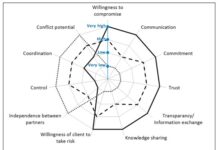Lean Construction, a methodology focused on minimizing waste and maximizing efficiency, is steadily taking root in Germany. The German Lean Construction Institute (GLCI), founded in July 2014, held its inaugural conference in Frankfurt in October 2015, marking a significant step forward for the movement within the nation’s construction sector.
The First Conference: A Gathering of Pioneers
The conference drew 211 participants from various stakeholders – construction companies, subcontractors, consultants, private owners, and researchers. The event served as a platform for sharing experiences and charting the course for Lean implementation in Germany. Presentations covered a diverse range of topics. A private owner detailed their successful implementation of Lean during the construction of a plant in Brazil, while another speaker drew parallels between the efficiency of car manufacturing and the potential for improvement in construction.
Practical examples were also presented, including the use of mobile apps on construction sites and a civil engineering company’s success in optimizing pipe jacking processes through collaborative analysis with site workers. The insights extended beyond traditional construction, with one speaker discussing Lean adaptations in cruise ship production and others focusing on Lean as a corporate strategy.
Early Successes and Lingering Resistance
Speakers consistently highlighted positive outcomes: projects delivered with fewer change orders, reduced defects, and adherence to budget and timelines. However, the German construction industry remains in the early stages of its Lean journey. A key barrier is inertia : many industry professionals are hesitant to adopt new methods, preferring familiar systems despite their inefficiencies. There is fear of failure and a perception that change is too difficult to achieve.
Key Challenges: People, Processes, and Mindsets
The conference surfaced several critical challenges. One speaker emphasized the need for immediate action rather than waiting for others to lead the way. The human element emerged as central: an experienced bricklayer resisted being told where to place his tools, illustrating the resistance to change ingrained in some workers.
Decision-making processes were also identified as a bottleneck. Delays and conflicts often arise from slow decision-making, which can be addressed through greater collaboration and process transparency. However, implementing transparency is difficult: measuring performance via indicators can lead to conflict if not accepted by all parties. Incentives aligned with Lean principles can help overcome resistance, but must be carefully considered.
Other hurdles include digitizing processes for older generations, adapting to the expectations of younger workers, and overcoming the construction industry’s traditional image.
Adaptability and Continuous Improvement
A recurring theme was the importance of adaptability and agility. The speakers argued that organizations must recognize the dynamic nature of construction and focus on continuous improvement as an ongoing process. The challenge isn’t how quickly an organization can change, but how quickly the environment is changing. Continuous improvement requires people to step outside their comfort zones and redefine those boundaries over time.
Leadership and Communication: The Human Factor
The successful implementation of a Lean culture depends on people. Leaders must guide their teams through the transition, fostering open dialogue and respectful interaction. Clear communication is vital : explaining the necessity of Lean, its benefits, and its impact is crucial for building a shared understanding.
Conclusion
Germany’s Lean Construction movement has made promising early strides, as evidenced by the GLCI’s initial conference and the positive results shared by participants. While significant hurdles remain, the industry is beginning to acknowledge the need for change and embrace new methodologies. The path forward requires addressing human resistance, streamlining processes, and fostering a culture of continuous improvement driven by strong leadership and effective communication.





















